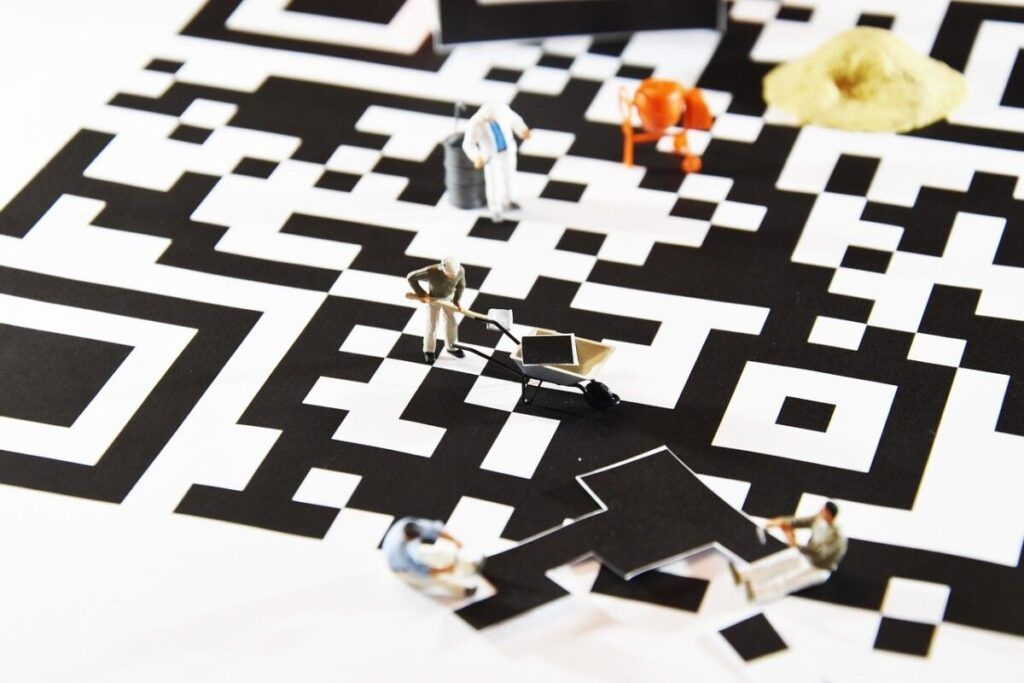
Image by Xavier Turpain from Pixabay
QR code image quality refers to the clarity and readability of a code when digitally represented or printed. Poor image quality will make a code appear blurry, pixelated, overly complicated, and prone to scanning errors that drive users crazy.
For businesses, this means missed opportunities to engage customers. A low-quality QR code could fail to direct users to your website, product, or service. Whether you’re sharing your website link or promoting a product, maintaining QR code quality is non-negotiable for success.
Moreover, embedding logos or custom branding QR codes increases the importance of image optimization. Unoptimized images make QR codes harder to scan, defeating the purpose of having them in the first place.
Common Problems Caused by Poor QR Code Image Quality
Let‘s dive into the most common issues caused by low-quality QR codes and unoptimized images:
1. Blurred or Pixelated QR Codes
Blurry or pixelated QR codes can be due to poor resizing or low-resolution designs. Sometimes, if your QR code is stretched beyond its original size without proper optimization, its scannability can suffer.
2. Excessive Complexity
These, unless the images are optimized, result in a too-cluttered look of the QR codes. Scanners can get confused and find it very hard to read.
3. Low Contrast
If the contrast between the QR code and its background is too low, then cameras may find it hard to detect the presence of the code. Better image quality ensures better readability and usability.
4. Unreadable Printed Codes
If your QR code is for print, poor image optimization can result in unreadable designs upon scaling down. This often happens when images are not prepared properly for printing.
How to Optimize QR Code Image Quality
Just a few best practices to keep your QR code perfect, working, and under your brand:
1. Use High-Resolution Images
For the embedding of logos or custom designs, high-resolution images should be used always. The quality of the QR code as a whole goes down due to the use of low-sized or pixelated logos.
Tip: Wherever possible, use vector images such as SVG files for logos because they can be scaled perfectly without losing their quality.
2. Optimize the Logo or Image
Before embedding an image into your QR code, optimize the image by reducing its size and simplifying the design. In addition, image compressors can assure clarity without compromising quality.
Hint: Tools like TinyPNG or your website’s built-in image optimization service can get images compressed for embedding onto a QR code effectively.
3. Maintain Proper Margins and Quiet Zones
Every QR code needs a “quiet zone”-a free area around the edges that helps scanners detect it. Ensure that no logos or images spill over into these areas, as that could interfere with scannability.
4. Test Your QR Code Before Use
After creating your QR code, test it across multiple devices to ensure it works. This helps you identify issues with image quality or scannability early.
Why Branded QR Codes Require Extra Attention to Image Quality
Branded QR codes have become a popular way to make a business stand out and reinforce its identity. You can embed your logo or customize the design to create a memorable, professional look that’s in line with your brand. However, this requires extra attention to image quality.
Here’s why:
- Custom Designs Are More Complex: Branded QR code generator often involve intricate patterns or colors, which can interfere with scannability if not optimized properly.
- Logos Can Hide the Code: A logo that is too big or not well-placed may hide important parts of the QR code and render it unreadable.
- Attractive Designs Engage More Users: Professionally designed QR codes make a better first impression and are likely to be used more.
- You will be able to easily make and customize a QR code, professional and of the best image quality, with a proper tool like OpenQR.io. Providing the possibility to change colors, embed logos, and test designs, OpenQR.io will ensure that your QR code is both stylish and completely working.
The Role of Image Optimization in QR Code Success
Image optimization is the process of preparing images so they are visually clear and load quickly while maintaining their quality. This process is vital for QR codes, especially when embedding logos or branding elements.
Benefits of Image Optimization for QR Codes:
- Improved Scannability: Optimized images ensure that the QR code remains functional, even with custom designs.
- Faster Load Times: When QR codes are displayed digitally (e.g., on websites), optimized images load faster, providing a seamless experience.
- Better Printing Results: Optimized images prevent pixelation or blurriness when QR codes are printed at different sizes.
Using an image optimization service alongside a QR code generator helps businesses achieve the best results. You can optimize images for web and print, ensuring your QR codes work flawlessly in any medium.
How OpenQR.io Simplifies the Process
Creating high-quality, branded QR codes doesn’t have to be complicated. OpenQR.io offers an easy-to-use platform where you can:
- Generate custom-branded QR codes.
- Embed optimized logos or images seamlessly.
- Choose colors and styles that match your brand.
- Test your QR codes for scannability before finalizing them.
With OpenQR.io, you can ensure your QR codes meet the highest standards of image quality and functionality.
Conclusion
Image quality plays a very important role in the success of QR codes right from design to the actual scanning by the user. By focusing on proper optimization, businesses can create QR codes that look nice, but also very reliable and effective.
Whether it be embedding logos or changing colors, image optimization services and OpenQR.io make the process seamless and efficient. By paying extra attention to QR code image quality, you ensure that your codes work seamlessly every time they are scanned.
Optimize your QR codes now and experience the difference it can make in performance and engagement!